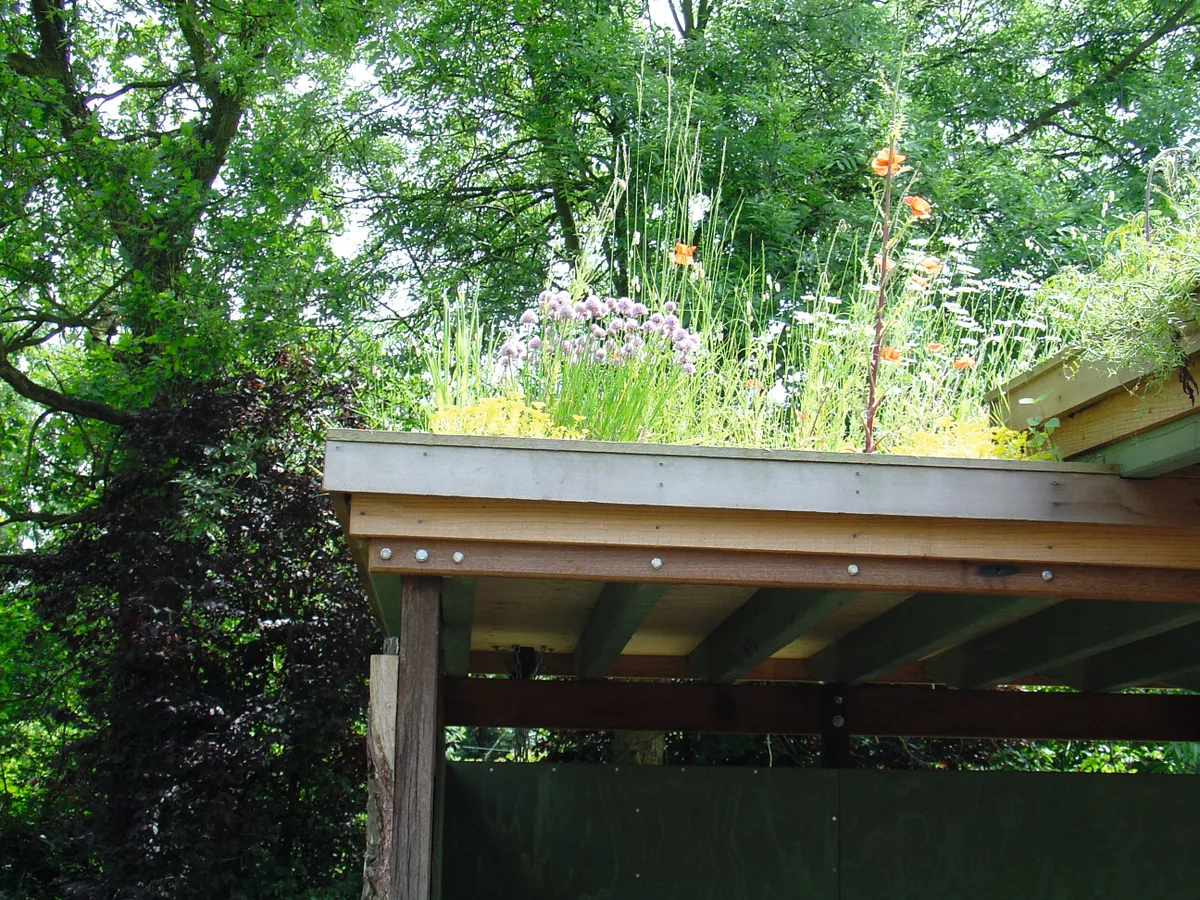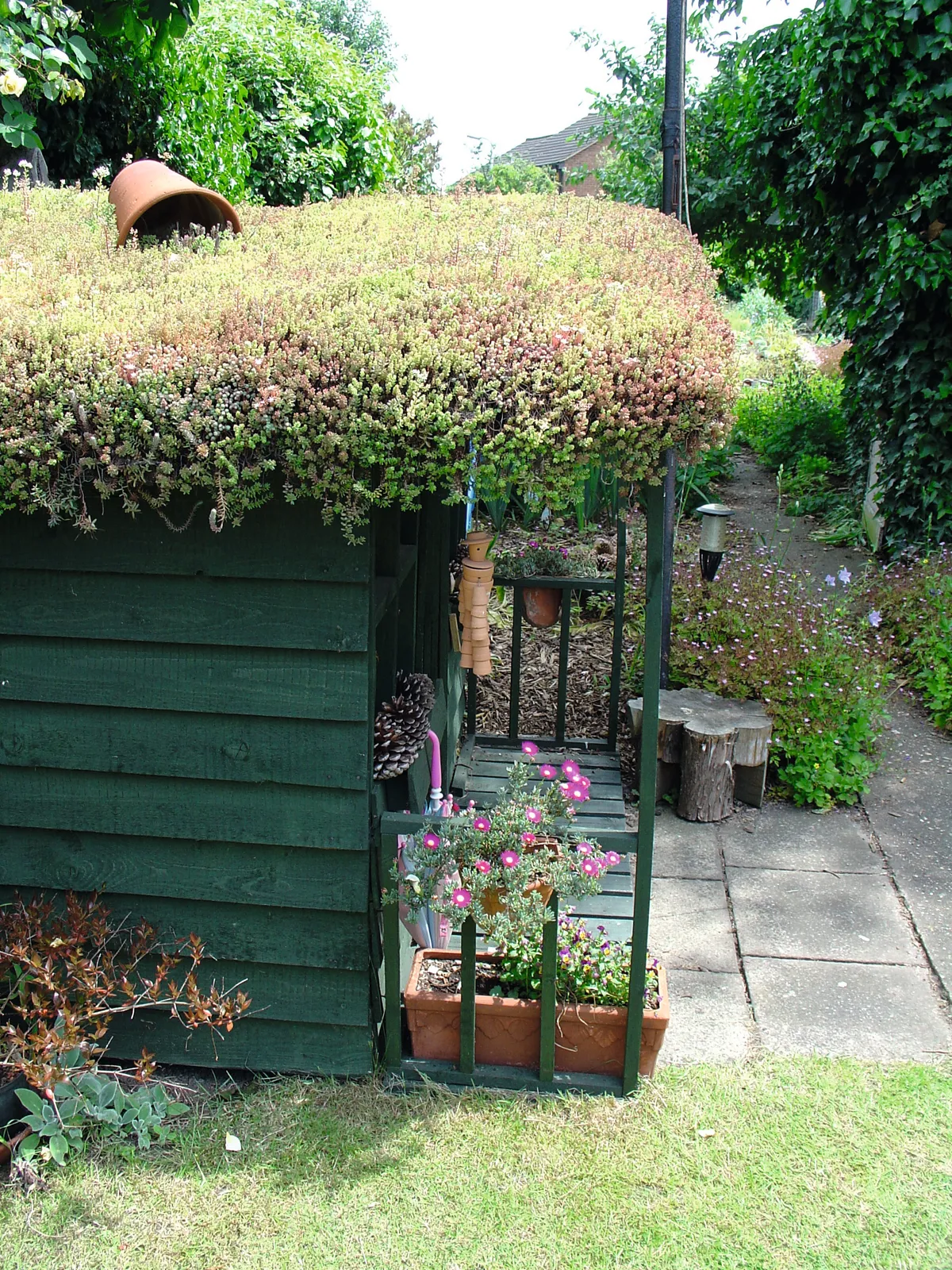Creating your own roof garden means you will have a new green space to enjoy in your home. More importantly, it will effectively revive an area of natural landscape lost when the land on which your home lies was originally developed. Green roofs can become micro-environments rich in value to wildlife.
What is a green roof?

There are two kinds of green roof: first, those that are basically traditional gardens at roof level – decorative spaces meant for regular recreational use. In the jargon of garden designers, these are intensive green roofs. Second, there are extensive green roofs, which have low-maintenance ‘greening systems’. Typically these are designed to catch rainwater that would otherwise be lost to run-off. The capacity of this kind of green roof to store water has some surprising benefits. For one thing, it could help to save our cities from catastrophic flooding. As our green spaces have been lost to tarmac and concrete, rainwater has fewer places in which to soak away slowly. This means that our water drainage systems are being forced to cope with an ever increasing volume of storm-water run-off. In the event of a major deluge, the drains are increasingly unable to cope and our cities suffer flooding. Green roofs can store 75 per cent of the summer rainwater that falls on to them and up to 40 per cent of winter rainfall. The retained water feeds the planting but also evaporates slowly back into the atmosphere.

Many green roof owners have found that sound and heat insulation are also much improved. Green roofs can even affect the climate by reducing the ‘heat island’ effect caused by dense urban development. In short, they can help cool cities in hot weather. They can also improve air quality and enhance views across urban roofscapes.
On a domestic scale, green roofs can be added to sheds, garden buildings and home extensions. And it’s worth remembering that while creating your own small area of green roofing may seem unlikely to save the planet, if everyone else follows suit, the environmental impact could be huge.
How to set up a green roof
Green roofs usually include a waterproofing membrane and root barrier material, both designed to protect the interior of the building and its fabric. A growing medium or substrate will normally be added in layers, often with stabilising sheets that bind these various layers together. Once sandwiched together, these layers may look quite thick, particularly on smaller structures, which sometimes appear top-heavy as a result.
If you want to place a green roof on an existing structure, you can add a new roof layer on top of the existing surface. The more economical option, though, is to use pre-cultivated mats or blankets that can be cut to shape and used above the existing roof system with the support of waterproofing membranes and root barriers.
On paved roof spaces this material can be laid like lawn to create a rooftop garden. In some cases pre-grown trays or tiles of low, mat-forming vegetation can be used to green the surface. The depth of these mats can be as little as 25mm. Sedum is the preferred plant in these systems as it can tolerate extremes of temperature, survives periods of drought and requires little maintenance.
Planting options

Which approach you take depends on the kind of plants you want to have on your roof. Sedum matting is often used for the pre-cultivated mats because of its drought-tolerance and ability to thrive in a shallow growing medium. Sedums have attractive textures and many forms are available, in a range of colours. It is attractive to invertebrates and insects and can improve biodiversity.
If you would prefer a turf roof or a mixture of meadow plants, you would need a growing depth of 10-15cm at least. Low ground cover planting would need 15-30cm depth, low shrubs 30-45cm, larger shrubs 50-75cm and trees at least 1-1.5m.
Ask an expert
The design of a roof garden is dictated more by structural and functional necessity than by pure aesthetics, and this is an important consideration to bear in mind before embarking on your project. If you are planning to use a growing medium 30cm thick or more, for example, or if the structure you have in mind is any larger than a garden shed or office, for safety’s sake it’s best to consult the services of a structural engineer. The main issue here is weight loading. In purpose-built roof terraces this may have been taken into account in the design process but if you have an original roof to convert you need to consider the weight of the planting (which will increase as the plants grow) together with the weight of the growing medium, which will significantly increase when wet. Added to this there is a loading factor inherent in planters, containers or the raised beds necessary to hold the planting medium and plants. The drainage of the water also needs to be considered as freezing water can cause damage to roof membranes.
KEY POINTS TO TAKE AWAY
- Mats or rolls of sedum vegetation will need fertilising and watering in the first weeks after installation. After this they are relatively low in maintenance.
- On smaller roofs such as those of sheds, summer houses and so on, sedums can be individually planted into the roof substrate or mat. Normally densities of 15 to 20 plug plants per square metre are used. In this way one can achieve a tapestry effect, but the plants may take longer to establish – between 12 and 18 months. Pre-grown mats establish in a much shorter time period.
- In planted roof gardens, lightweight materials such as Leca (expanded clay granules) or even polystyrene should be used to bulk up unnecessary space in planters. Growing mediums should then be added on top.
- When using roof spaces that were not designed as gardens you should consult your local authority. They will take a view on balustrades, which should be introduced for the safety of garden users and of those down below.
- Consult a structural engineer if you are planning to use a roof space as a garden. They will be able to offer advice on the strength of the structure and its suitability for use as a garden.
Useful websites and publications
- www.bauder.co.uk Green roof systems. Producer of roof and planting systems for a variety of applications.
- www.grassroofcompany.co.uk Advice and inspiration, including a downloadable DIY guide to green roofs (£11.65), from a firm which won a silver gilt medal at Chelsea in 2007.
- www.livingroofs.org Advice on the installation of green roof systems and the philosophy behind them, from Mathew Frith and ‘urban ecologist’ Dusty Gedge (see also www.dustygedge.com).
- www.nigeldunnett.com Information on roof garden schemes undertaken by Dr Nigel Dunnett, with links to research by Nigel’s department at Sheffield University.
- Planting Green Roofs and Living Walls by Nigel Dunnett and Noël Kingsbury (Timber Press, 2008). Information on the construction and planting of green roof and green wall systems.
- Rain Gardens by Nigel Dunnett and Andy Clayden (Timber Press, 2007). How to channel, save and redeploy the rainwater that falls on your property.
Andrew Wilson. Andrew is a garden designer, writer and lecturer, and an assessor and judge for RHS show gardens